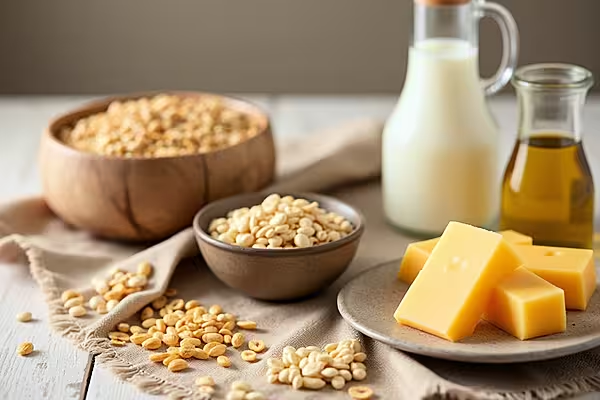World food prices hit a record high in February, led by a surge in vegetable oils and dairy products, seeing a 20.7% increase year-on-year, the UN food agency has said.
The Food and Agriculture Organisation's (FAO) food price index, which tracks the most globally traded food commodities, averaged 140.7 points last month against a downwardly revised 135.4 in January. That figure was previously given as 135.7.
Higher food prices have contributed to a broader surge in inflation as economies recover from the coronavirus crisis and the FAO has warned that the higher costs are putting poorer populations at risk in countries reliant on imports.
FAO economist Upali Galketi Aratchilage said concerns over crop conditions and export availabilities provided only a partial explanation to the increase in global food prices.
Food Price Inflation
"A much bigger push for food price inflation comes from outside food production, particularly the energy, fertiliser and feed sectors," he said. "All these factors tend to squeeze profit margins of food producers, discouraging them from investing and expanding production."
Data for the February report was mostly compiled before the Russian invasion of Ukraine. Concerns over tensions in the Black Sea area were already weighing on agricultural markets even before the violence flared, but analysts warn a prolonged conflict could have a major impact on grain exports.
Read More: World Food Prices Hit 10-Year High In 2021: FAO
The FAO said its vegetable oils index rose 8.5% month-on-month in February to chalk up another record high, propelled by rising palm, soy, and sunflower oil prices. Ukraine and Russia account for about 80% of global exports of sunflower oil.
The cereal price index rose 3.0% on the month, with maize prices up 5.1% and wheat prices increasing 2.1%, largely reflecting uncertainty about global supply flows from Black Sea ports.
The FAO's dairy price index increased 6.4%, its sixth consecutive monthly rise, underpinned by tight global supplies, while meat prices rose 1.1% in February.
By contrast, sugar was the sole index to post a decrease, shedding 1.9% from the previous month due partly to favourable production prospects in major exporters India and Thailand.
Cereal Output Projections
The FAO also issued its first projections for cereal output in 2022, seeing global wheat production rising to 790 million tonnes from 775.4 million in 2021, thanks in part to hopes of high yields and extensive planting in Canada, the United States and Asia.
The UN agency cautioned however that its projections did not take into account the possible impact of the conflict between Russia and Ukraine.
The FAO said maize outputs in Argentina and Brazil in 2022 were forecast at well above-average levels, notably in Brazil where the maize crop was seen reaching a record high 112 million tonnes.
World cereal utilisation in 2021/22 was forecast to rise 1.5% above the 2020/21 level, hitting 2.802 billion tonnes. The FAO's forecast for world cereal stocks by the close of seasons in 2022 stood at 836 million tonnes.
News by Reuters, edited by ESM – your source for the latest Supply Chain news. Click subscribe to sign up to ESM: European Supermarket Magazine.














